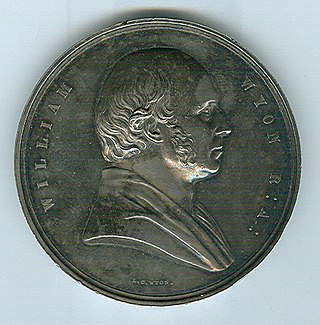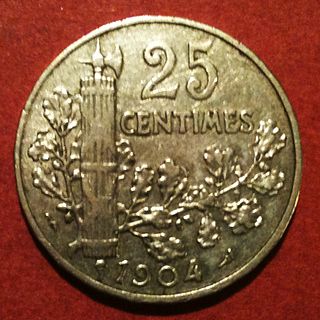Related Research Articles

William Wyon, was official chief engraver at the Royal Mint from 1828 until his death.

Thomas Pingo (1714–1776) was an English medallist and die engraver. He worked for the Royal Mint in London. Originally thought to have come from Italy in 1742, and born there in 1692, he was in fact the son of Thomas Pingo Sr of Plumbtree Court, London. The Pingo family first appeared in London in the 1650s in the Parish of St Martins-in-the-Fields.

Christian Gobrecht was the third Chief Engraver of the United States Mint from 1840 until his death in 1844. He was responsible for designing the famous "Seated Liberty" designs, which were in turn the direct inspiration for the design of the Trade Dollar. He designed the Gobrecht Dollar, which was struck in small quantities from 1836 to 1838 and later inspired the Flying Eagle cent. He also designed the obverse sides for the Liberty head Quarter Eagle, Half Eagle, and Eagle gold coins, as well as the "braided hair" type Half cent and Large cent coins.
Franz Stiasny produced a large series of bronze portrait medals of important writers, musicians and historical personages in rectangular formats. Stiasny was best known for his portraits of famous composers. Various bronze medals were cast in Austria, c.1930.
George William de Saulles was a British medallist. He designed the obverse of coins of the United Kingdom and its colonies under Queen Victoria and King Edward VII.

Henri Auguste Jules Patey was a French sculptor, medallist and coin engraver.
Warwick William Wroth was a numismatist and biographer. He was Senior Assistant Keeper of Coins and Medals in the British Museum and one of the original contributors to the Dictionary of National Biography, with which he was associated almost until its completion.

Louis-Eugène Mouchon was a French painter, graphic artist, medalist, engraver and sculptor. He created state papers, stamps, coins, currency and medals. He was the son and pupil of Louis Claude Mouchon, the painter. He exhibited at the Salon from 1876 onwards and became an Associate of the Artistes Francais in 1888. His most famous stamps are the Mouchon series and the Navigation & Commerce series of French postage stamps. His medals can be found in the collection of several museums.

Conrad Heinrich Küchler was a German medalist who from 1793 until his death worked as a designer of coinage and medals for the manufacturer and mint owner Matthew Boulton.
Alphonse Michaux (1860–1928) was a Belgian coin engraver and medalist.
The Medal of the Royal Numismatic Society was first awarded in 1883. It is awarded by the Royal Numismatic Society and is one of the highest markers of recognition given to numismatists. The president and Council award the medal annually to an "individual highly distinguished for services to Numismatic Science".
Chief Engraver of the Royal Mint is a senior position at the British Royal Mint who is responsible for overseeing the preparation of coin dies.

John Doubleday was a British craftsperson, restorer, and dealer in antiquities who was employed by the British Museum for the last 20 years of his life. He undertook several duties for the museum, not least as a witness in criminal trials, but was primarily their specialist restorer, perhaps the first person to hold the position. He is best known for his 1845 restoration of the severely-damaged Roman Portland Vase, an accomplishment that places him at the forefront of his profession at the time.

Gianfrancesco Enzola was an Italian medallist, known as il Parmense.

Christian Fueter was a Swiss medalist and mint-master at Bern from 1792–1837.

Joseph-Pierre Braemt was a Belgian medalist and coin designer.

Joseph Moore was a British medallist.
Johann-Baptist Frener (1821–1892) was an engraver from Lucerne, who was instrumental in the creation of coinage for the early republics of Guatemala and Honduras.
References
- ↑ Herbert A. Cahn: Leonard Forrer senior †. In: Schweizer Münzblätter 4, 1954, S. 71-72 ()